Introduction
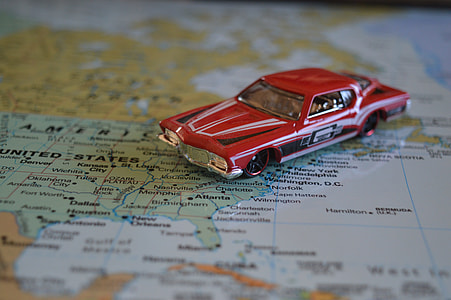
For you travelers who come to the United States, you should definitely try a road trip experience. The United States has an extensive and well-maintained highway system, including the iconic Route 66 and the scenic Pacific Coast Highway, making it very comfortable and enjoyable to travel long distances with a car.
So it is necessary to read closely through this guide, including information concerning how to rent and pick up your car, local traffic rules, highway regulations and a few things to be cautious along the way, especially if you are renting a car in America for the first time.
Car Rental Tips
Book in Advance
Generally, we recommend that you make your reservation one month in advance so that you could choose the desired vehicle and date.
If you proceed directly to the car rental store without a booking, it is likely that the car you need might be unavailable.
*If you are already a QEEQ diamond member, you only need 1$ to freeze your booking and make the rest of the payment before pick-up, which does not affect your credit card limit.
Required Documents
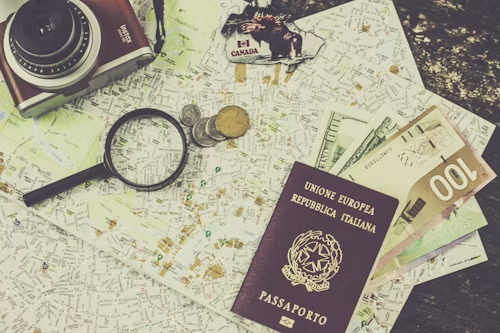
Passport, Driver’s License, IDP(Optimal), Credit Card
International Driving Permit (IDP) is highly recommended, which allows you to drive legally in countries that need one.
If it is inconvenient for you to apply an IDP, generate a free driver’s license translation on QEEQ.com (Available only on Japanese site).
Car Choices
The choice of your car depend largely on the duration of your trip, passenger number, luggage amount and road conditions.
- City Driving for small groups (1-3 passengers)
If you area couple, or travel with a friend or two, or if you travel alone, a reasonably priced small car would be a good choice.
Compact size cars have 4 to 5 seats. We recommend sparing one passenger capacity so you could relax and have more space.
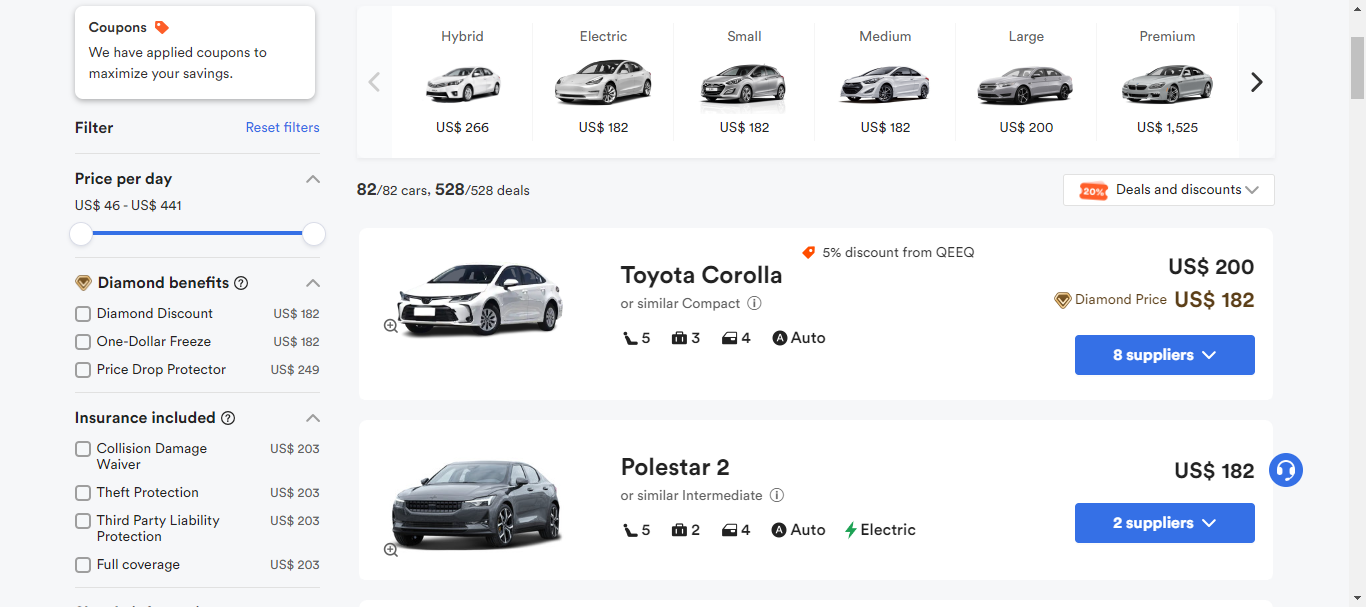
- 4 to 5 passengers including children and elderly
Medium and large size cars are recommended. These models could still possess a fair mount of space with 2 to 3 suitcases. SUVs are suitable for hybrid road conditions. Eco-friendly cars such as the Prius could save your spend on gasoline. Choose what you need giving you peace of mind on long trips.
- Traveling in a group of 6 or more
It would be a wonderful experience to choose a van for everyone to have his or her own seat. These models accommodate a passenger capacity from 7 to 12 people. While it is noticeable that large cars cannot make quick and sharp turns. So we recommend renting two small or medium-sized cars if you spend a lot of time driving through towns.
Online Booking Process

We are endeavoring to make your booking as convenient as possible. Enter our website QEEQ.com, log in, enter the required information, and follow the instructions, you are free to rent your desired car.
Insurance
What Insurances Are Available?
*For Autopilot Cars:
(1)Insured: Protection for the person renting the car, including passenger accident insurance and personal accident insurance (PAI). This includes the personal safety of the driver, passengers, and their personal belongings.
(2) Automobile Insurance: protection for the vehicle of the renter. Collision Damage Waiver (CDW) is one example.
(3)Third-party Insurance: insurance that protects third parties other than the renter and the car rental company. Basic Third Party Liability (BTL) insurance, etc.
International car rental booking will include the basic insurance required for car rentals: Vehicle Damage Coverage, Theft Protection, and Third Party Liability Insurance.
The deductible is the maximum amount of money you’re liable for in the event your rental car is damaged or stolen as long as you follow the conditions of your rental agreement. For example, the deductible is USD1000, if the damage to the rented car is less than USD1000, the customer pays; if the damage is more than USD1000, the customer pays up to USD1000; and the store’s insurance company pays for the part exceeding USD1000.
Many travelers want more comprehensive coverage and purchase additional insurance. Personnel, vehicle and third-party coverage varies by insurance type. Here are some examples of common types of insurance (note: more checks means more coverage):

When and How to Purchase Insurance
There are two ways to obtain insurance: one is to purchase insurance when booking the car online; the other is to purchase insurance at the local store where the car is rented when picking up the car.
Generally, insurances provided by rental car companies usually has narrower coverage, higher premiums, so purchasing insurance online when booking the car is highly recommended.
How to Choose Insurance
If you are traveling with limited budget, it is better to choose the kind of insurance policy with the most comprehensive coverage. The main reasons are:
Firstly, repairing fee for the car would probably be higher abroad.
Secondly, in case of an accident, the medical cost and compensation are very high in the U.S.
Thirdly, the wider the coverage, the less the troubles you would deal with, which saves tons of time and energy.
Taking automobile insurance as an instance, comparing to common insurance policies, the most comprehensive insurance coverage, including glasses, tires, chassis protection, and considerations for special road conditions such as sand and rocks, is very necessary, but basic insurance of car rental companies usually does not include full coverage as such.
Picking Up the Car
Check Before Departure
Before proceeding to the car rental shop, make sure you have brought with you all necessary documents for picking up the vehicle, and two international credit cards is recommended to ensure that there is enough credit limit for pre-authorization.
Proceed to the Car Rentals
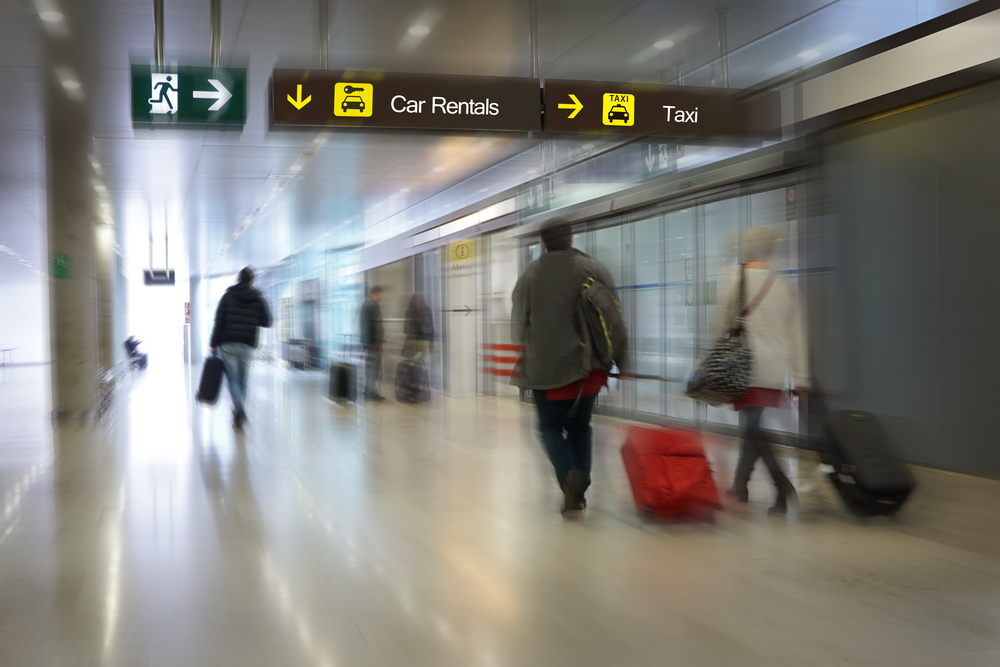
If there is a pickup store nearby, you could just walk there, following signs for airport rental cars.
If the rental car center is far away, there is usually a free shuttle bus bound for the rental car center. Shuttle buses run every 10 minutes approximately, so take the bus when you see the logo of your car rental company.
If the shuttle is not available, you can contact the car rental company and wait for staff member to pick you up at designated location. In case you have difficulty communicating with the store staff, please call QEEQ and we will assist you in English or other languages.
Inspect the Car

When you receive your reserved vehicle, inspect the bodywork for damage. At that time, it’s a good idea to document the entire process with your smartphone camera or take a picture of the dashboard. Because if you forgot to check the condition of your vehicle before departure, you may be charged for wronged damage repairs when you return it.
Payment
Payment is due on the day of the rental unless you are paying online or purchasing a tour package.
Insurance is usually included in the rental price, but some car rental companies offer paid options for more comprehensive coverage.

Last but not least, keep all contracts and documents safe for possible further usage. Once you have received your keys, check the seat heights, mirror positions, secure child seats, and then you are ready to go!
Traffic Rules and Signs
Drive on the Right
In the United States, vehicles drive on the right side of the road, and the cars are of left rudder ones. So if the driving convention is different from your country’s, this is the first thing you should notice.
Stop Sign

Be aware the red stop signs. When you encounter one, you must come to a complete stop of 3 seconds before proceeding. It functions like red light.
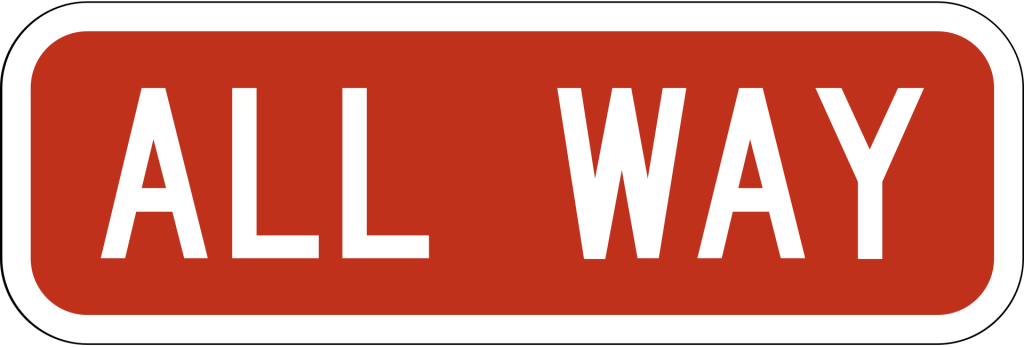
If you saw a 4-Way Stop or All-Way Stop sign on the road, follow these guidelines:
First come, first pass;
If the vehicles arrived at the same time, the one on the right goes first and the left one must yield;
If opposing vehicles arrived at the same time, and there is a conflict in the driving trajectory, the vehicle going straight proceed in advance.
If vehicles in opposite directions arrived at the same time and there is a collision between two turns, the right-turning vehicle will give way.
Remember, the right-of-way is never taken, it’s always given.
Speed Limits
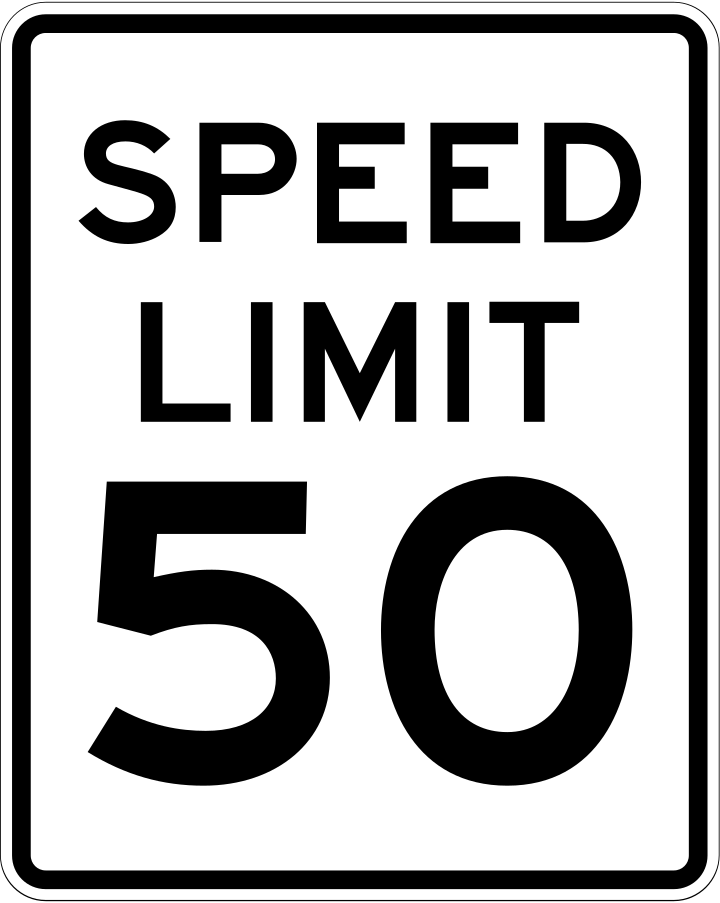
In the United States, speed is measured in miles per hour, the same as on the dial. Speed limits in the United States vary from state to state. For example, in California, the speed limit is 65 to 70 mph on freeways, 55 to 65 mph on public roads, and 25 to 30 mph in residential areas. However, specific speed limits are determined by on-site signs, and some freeways have different speed limits depending on the section.
Yield
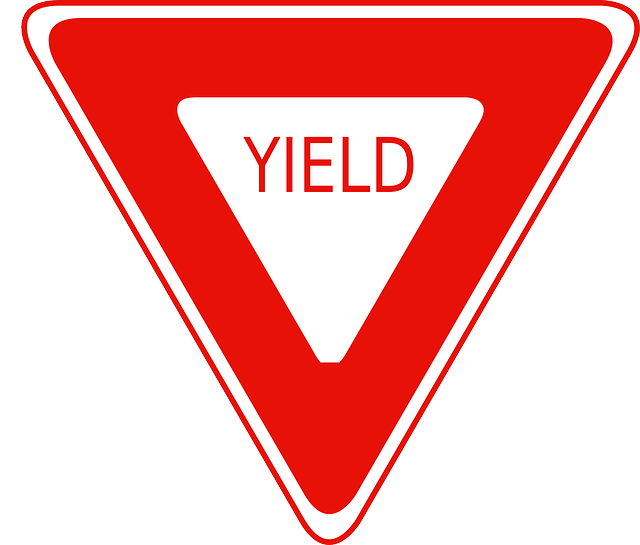
A yield sign is a regulatory traffic sign that instructs drivers to slow down and, if necessary, stop to allow other road users (vehicles and pedestrians) the right-of-way before proceeding.
Emergency Vehicle Priority
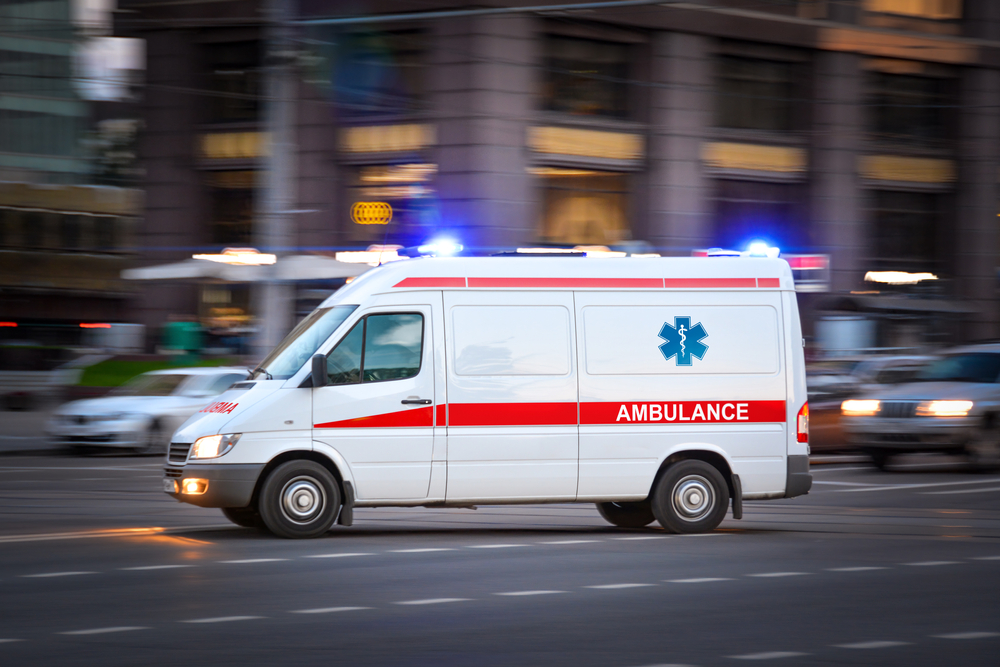
When encountering emergency vehicles (e.g., police cars, ambulances), you must pull over and allow them to pass.
Pedestrians First
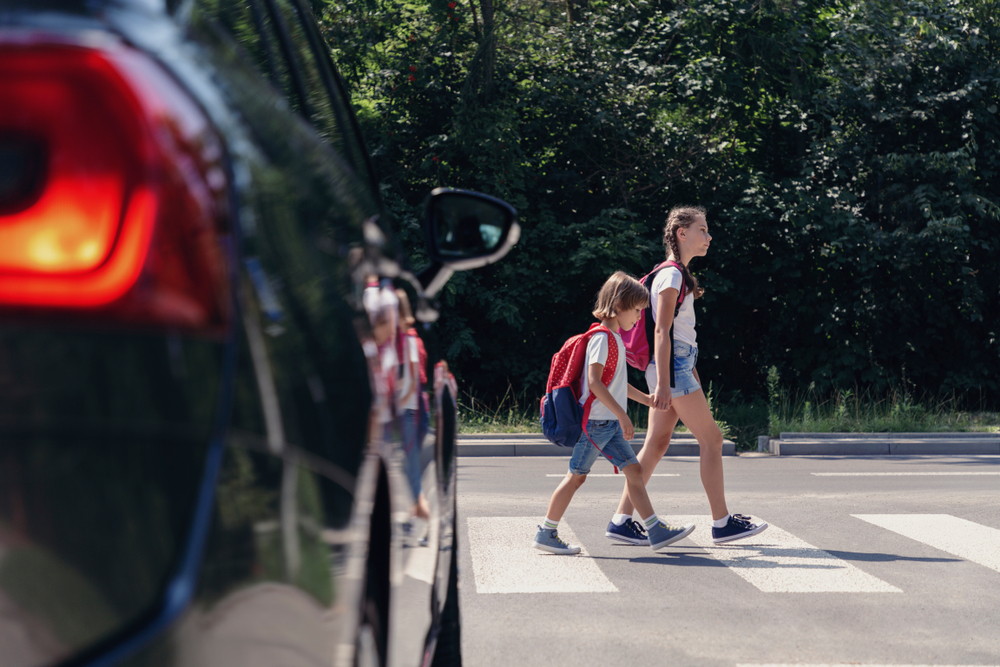
The U.S. Traffic Code states that “pedestrians have priority,” and in the U.S., cars always give priority to pedestrians, whether the light is green or red, and whether the pedestrian was walking illegally or not, you have to pay attention.
No Turn on Red
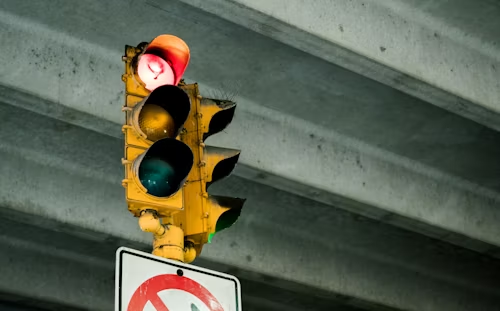
In the United States, you can usually make a right turn on a red light, but you must come to a complete stop at the intersection and make sure that there are no oncoming traffic, left-turning vehicles, or pedestrians. If you do not come to a complete stop to make a right turn, you will be fined approximately $450. However, be careful if you encounter the words “NO TURN ON RED” while driving because the light at that intersection is red and right turns are prohibited.
In New York, there is a special turn on red sign that says “Right Turn on Red” without which you cannot turn right on red!
Right-of-Way
The United States pays great attention to the right-of-way. The main rules are: turning vehicles yield straight going ones, side roads vehicles yield those on the main road, vehicles not in the traffic circle yield those has entered the traffic circle, left turns yield right turns. Americans strictly abide by the right-of-way, therefore, in order to avoid accidents, if there is no right-of-way you must avoid.
Seat Belts and Child Seats Required
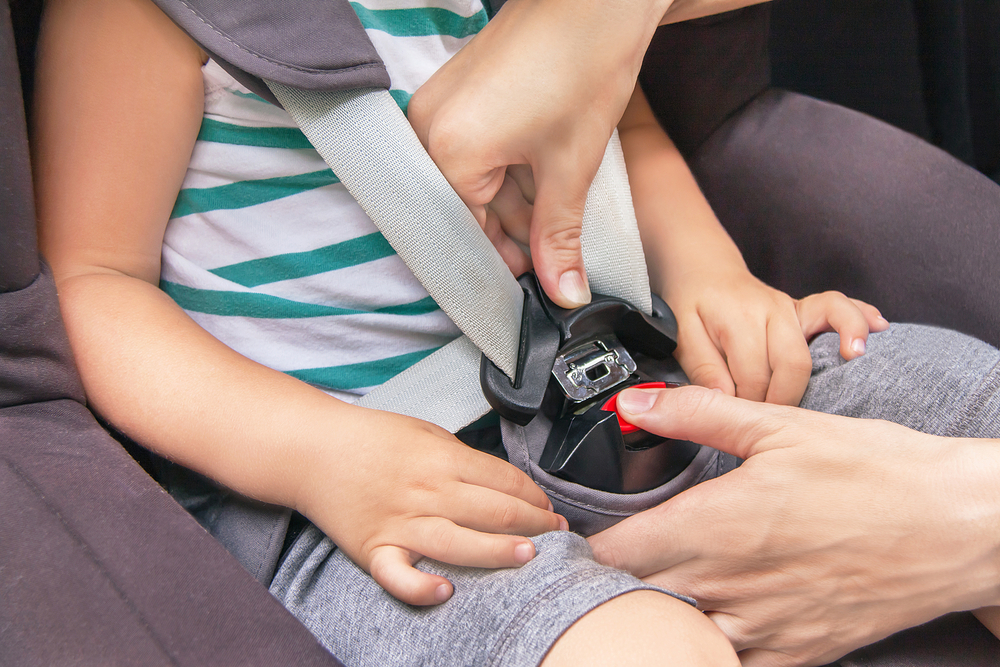
Everyone in the vehicle must wear a seat belt, including backseat passengers.
Children in the vehicle must use a child seat. For example, in California, children under 8 years old, those who weigh less than 60 pounds, and those are less than 1.44 meters tall must be in an appropriate child seat and may only sit in the back seat.
Do Not Leave Children in the Car Alone
Children may not to be left alone in a vehicle at any time and violators may be charged with a child safety violation.
Left Turn Lane
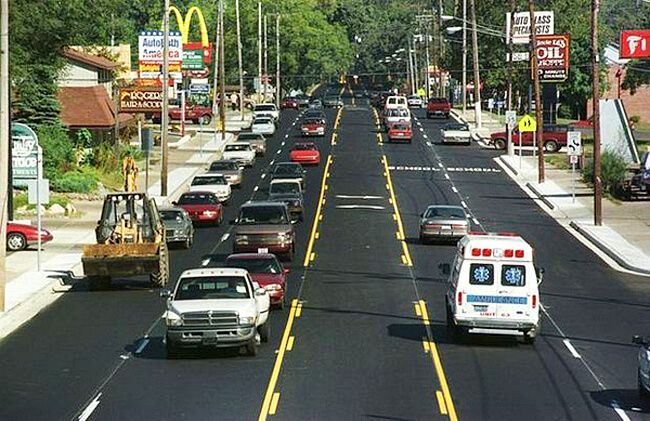
In the United States, there are designated left turn lanes. You should use this lane when preparing to make a left turn or U-turn. However, you cannot travel more than 200 feet (about 60 meters) in the middle left-turn lane. This section of the road usually has no traffic lights or turn signs, and could be traveled in both directions or turned around, so it is easy to get into an accident, so it is called “Death Lane” or “Devil’s Lane”.
Highway Regulations
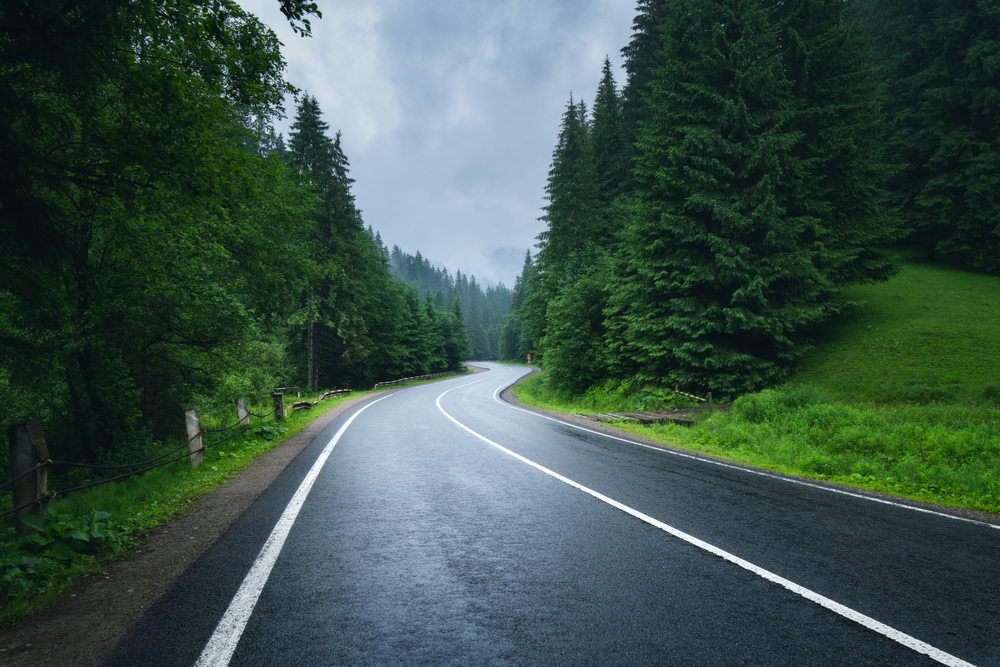
Road conditions you need to notice:
- The highways in America are suitable for autopilot because of the width of the road and the openness of vision.
- If you are going to drive through the western United States, visiting national parks and traveling through many mountain ranges, wilderness, deserts and forests, you need to drive carefully and add enough fuel to your car to prevent it from breaking down.
- Winter driving in mountainous areas requires special attention, snow tires and anti-skid chains may be essential.
Common Regulations
- HOV/Carpool Lane
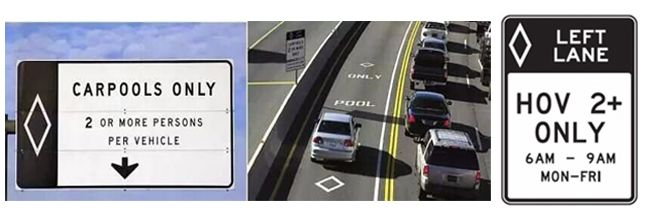
Priority lanes for vehicles carrying two or more people to relieve traffic congestion are called HOV (High Occupancy Vehicle) lanes or carpool lanes. Check the signs for the number of people required.
- Traffic Lights
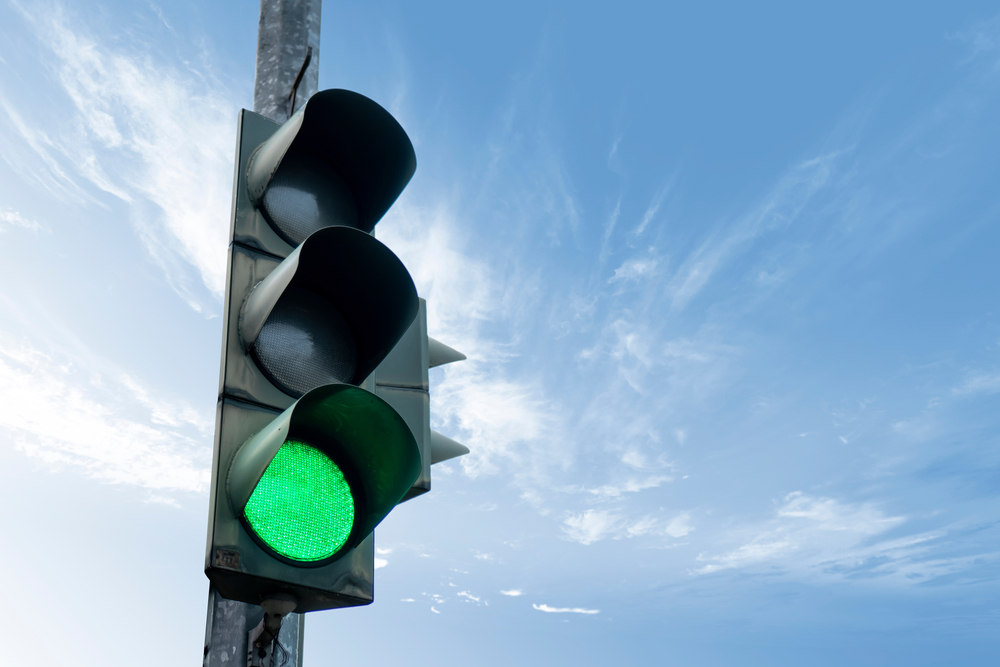
In the United States, most highway gates have traffic lights, so please be aware that there is only one vehicle could pass at each green.
- Do Not Continually Occupy Passing Lane
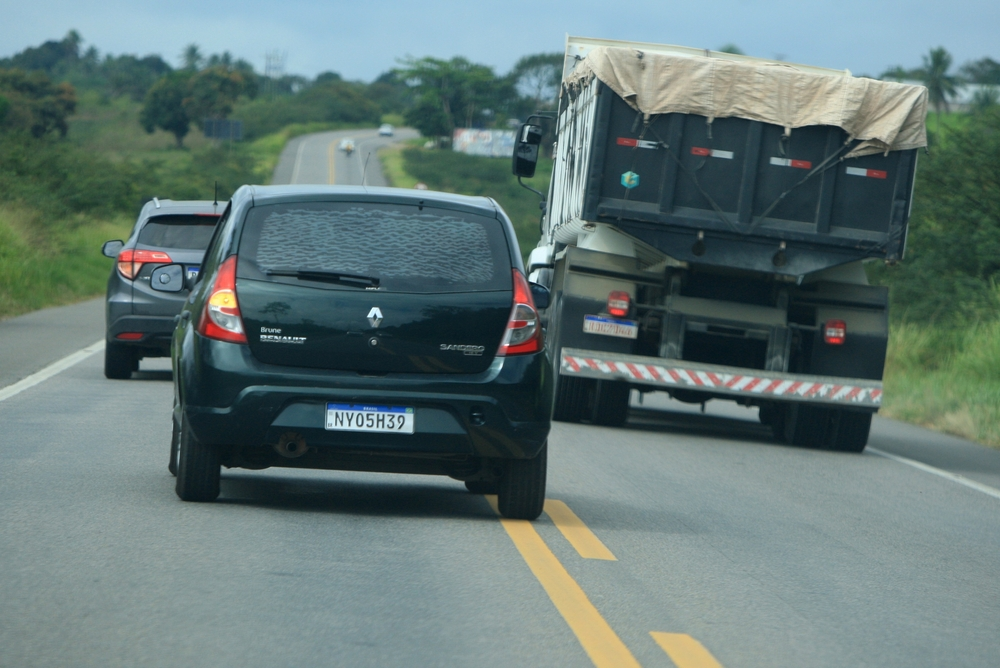
When driving on the highway, you should be careful not to occupy the left lane for too long. In the United States, it is common to follow and pass the vehicle without honking your horn or flashing the lights.
- Caution for Motorcycle
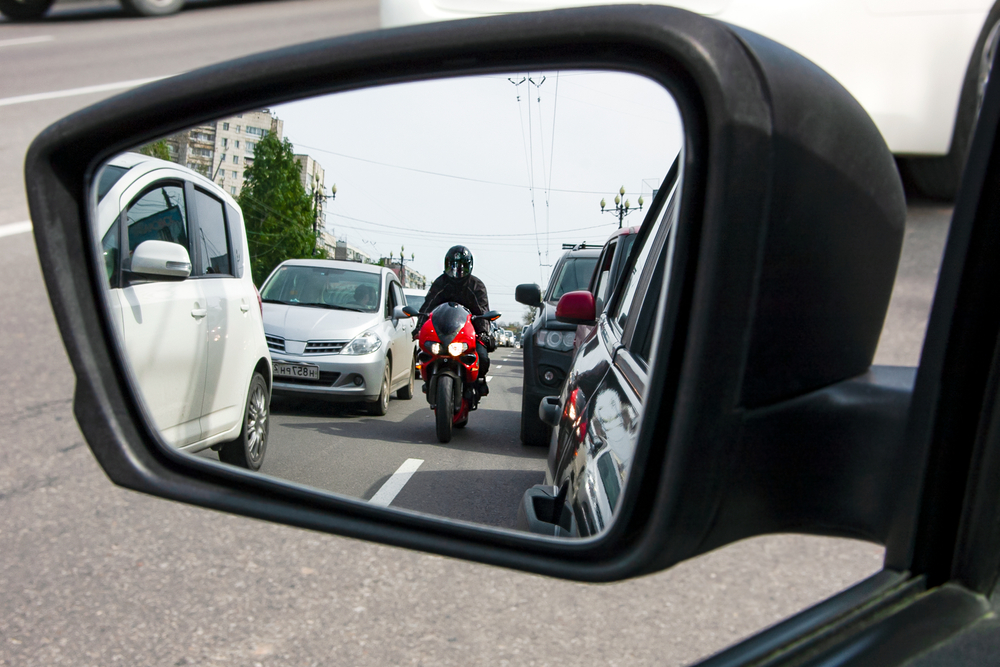
Motorcycles are allowed on U.S. highways. They are usually pretty fast and often change lanes, so be careful if you see a motorcycle.
Toll Payment
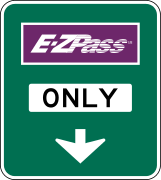
There are two types of toll roads in the United States. One could identify with the “TOLL” sign, which indicates that the entire section of the highway is tolled, and the lanes are divided into express lanes and self-service or manual lanes.
When planning your trip, it’s a good idea to check ahead of time if your route passes through toll roads, and if so, set your GPS navigation to avoid them.
- How to Pay
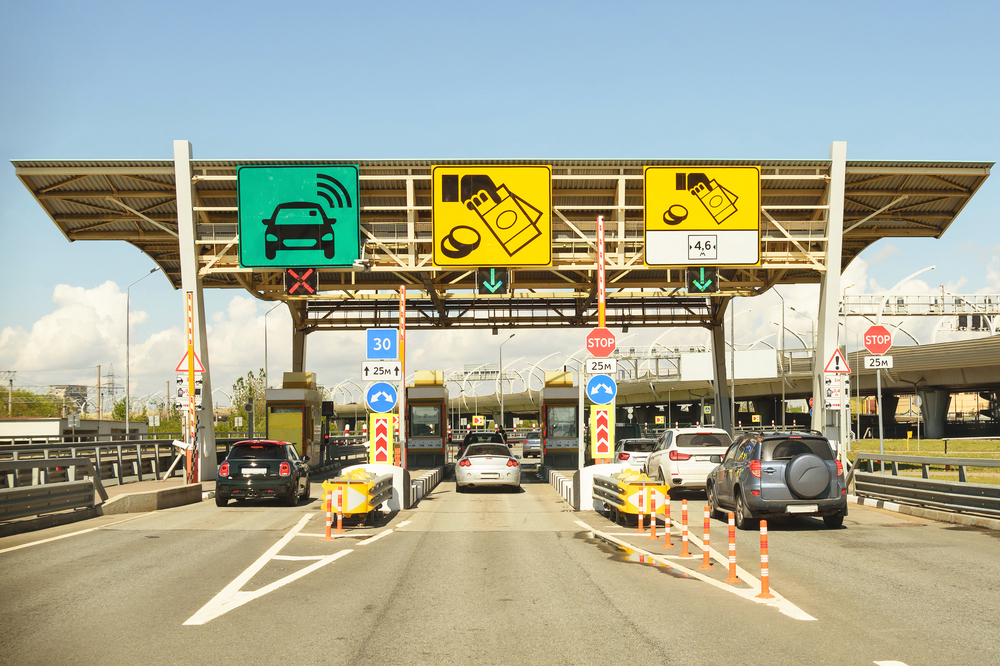
There are three main types of tolls on U.S. highways: electronic toll cards, self-service tolls, and manual tolls.
Most toll roads, including California, require electronic toll payments, which vary depending on the distance traveled but are generally inexpensive.
We recommend that you borrow a toll device such as FasTrak, Plate Pass or E-ZPass from our staff when you rent your car so that you can pass through the toll booths faster. If a toll is incurred, the rental car company will charge the credit card you use directly, so there will be no fees after, but the rental car company will charge you a service fee accordingly.
- What if I Stepped on Toll Roads Accidentally?
Some toll roads do not have obvious warning signs that can be easily overlooked. People sometimes enter a toll road without paying the toll. You can visit www.thetollroads.com and click “PAY TOLL NOW” and follow the steps to complete your toll payment. Late payments will result in a violation ticket.
Refueling and Parking
Refueling
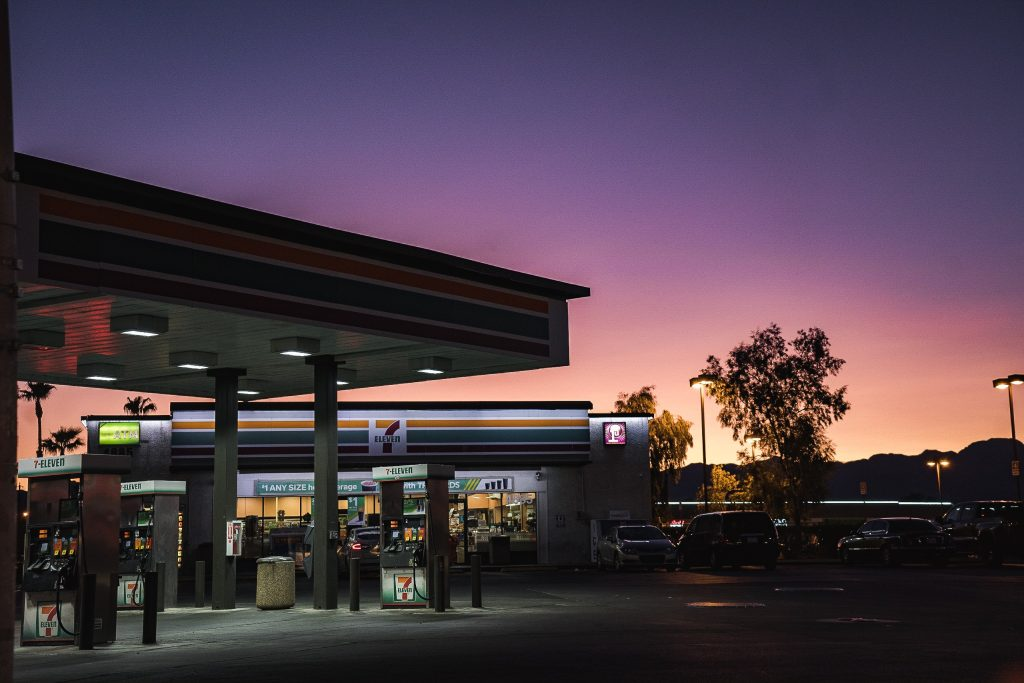
- Types of Gasoline
There are three types of gasoline in the U.S.:
Regular: No.85~88 oil;
Midgrade (or Plus): No.88~90 oil; Premium (or Supreme) Premium (or Supreme): No.90 or higher.
To fill the tank, follow the instructions on the gas cap of the vehicle or read the manual. If you are unsure, ask the clerk when you pick up your vehicle. In the United States, most vehicles are filled with 87 (regular) gasoline. In the unlikely event that the wrong fuel is added, contact a service store as soon as possible to clean the gas tank and fuel system and check the engine. To avoid injury, do not start suddenly.
- Self-Serve Gas Station
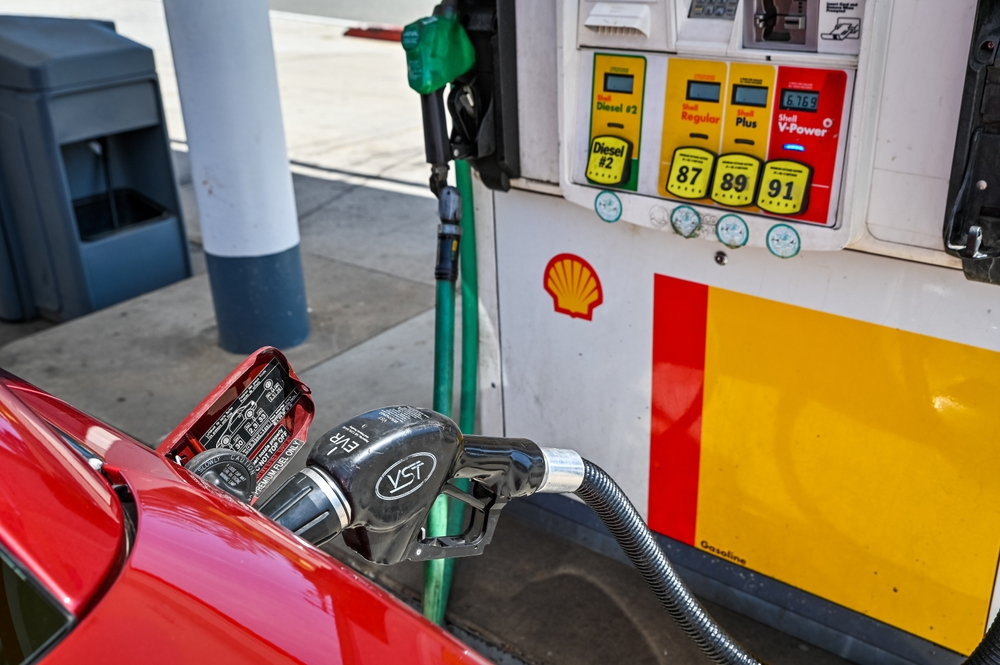
Gas stations in the U.S. are mostly self-service. Payment is made by credit card or cash.
Cash payment process: memorize the number of the nozzle → pay cash at the store cashier → choose the type of gasoline → take out the nozzle and start refueling → change at the store cashier.
Credit card: Insert the card, enter information, remove the card, select the type of gasoline, remove the nozzle and start refueling.
Please note that most gas stations in the United States only accept U.S. credit cards. When using an international credit card outside the United States, payment is made in the same manner as cash. We recommend that you pay in cash, and some booths offer discounts if you do.
Parking Regulations
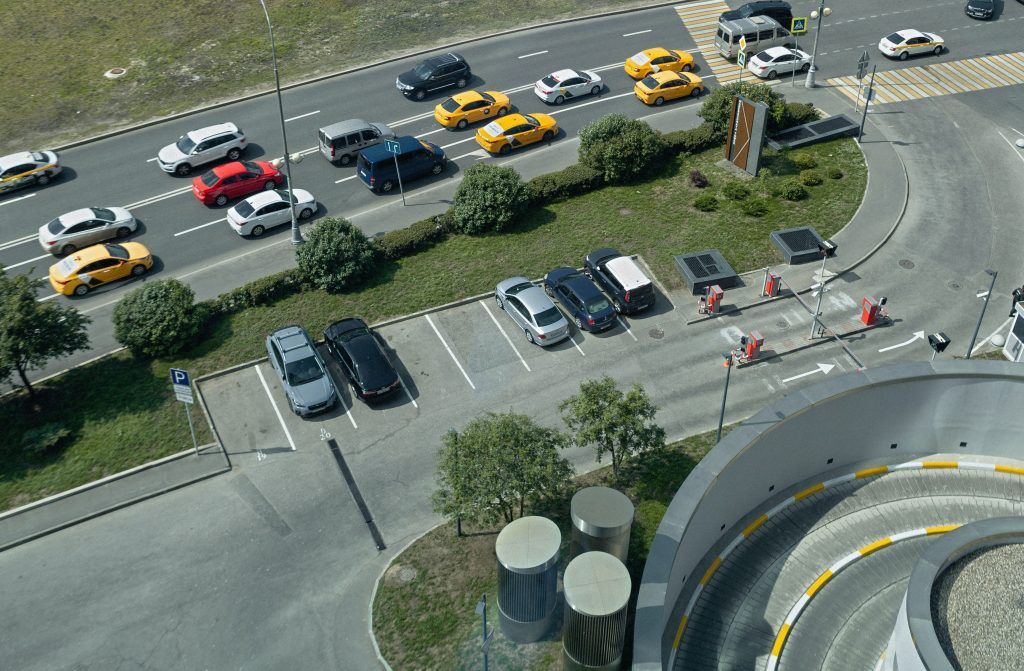
Where can you park:
- Public Parking Lot:
Free public parking is usually available near shopping centers and supermarkets. Paid parking is usually available in resorts and downtown areas.
- Roadside:
Most roadside parking is time limited and are displayed on parking lot signs. Pay attention to the signs and be careful not to exceed the time limit when parking in the area.
Where you cannot park:
- Parking is prohibited in parking spaces for the disabled, building entrances and exits, fire hydrants, and bus stations. Unless there is a disabled person in the vehicle.
- You may not park within 30 feet of an intersection. If there is a “NO PARKING HERE TO CORNER” sign near the intersection, you may not park past the sign. If there is no such sign, you need to park 30 feet from the intersection and pay attention not to block any entrances or exits.
Payment:
- Pay by the Meter
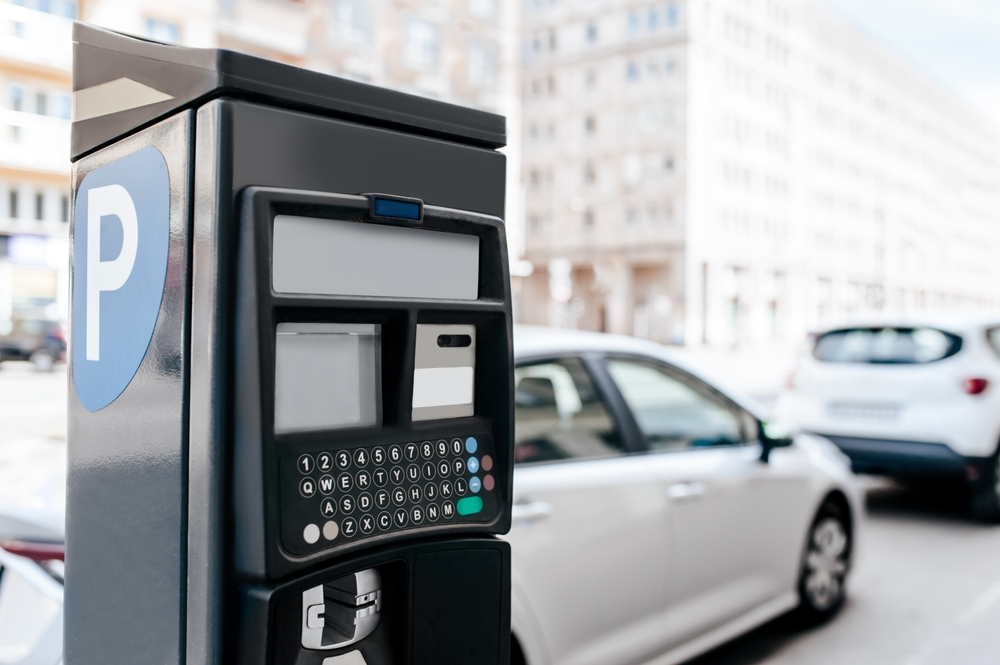
Parking meters charge $1 to $3 per hour and can be paid with a credit card or coins:
Coin/card – Select time – Confirm – Print receipt – Put the receipt on windshield.
- Pay at the Entrance/Exit
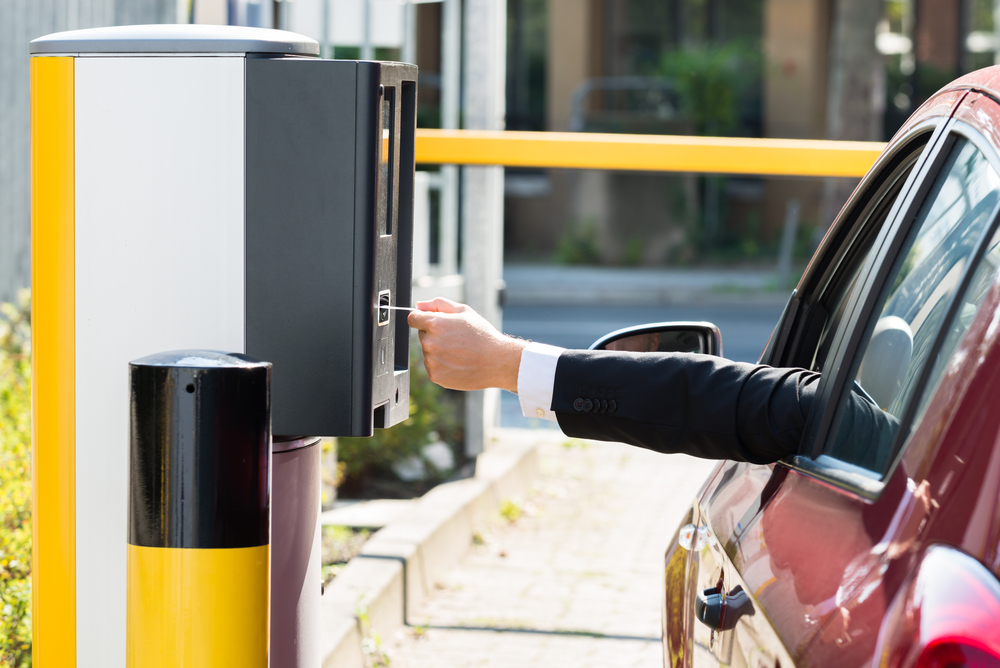
This kind of parking fees are relatively high, ranging from $2 to $20 per hour, and can be paid in cash or by credit card.
There are two ways to pay for parking: Before or after parking:
Before parking: park your car, choose the duration on the self-payment machine, pay the fee, print a small ticket and stick the ticket on the windshield.
After parking: Get a parking ticket at the entrance, park your car, exit the parking lot, put the ticket in the self-payment machine, pay the fee, print the ticket and leave it at the exit.
Accident Handling
If you are involved in a traffic accident, do not panic. Check if the passengers are injured, if so, help yourself and seek help from passersby. Emergency contacts are available at any time.
Police, Fire, Ambulance: 911
Embassy Numbers by Country:
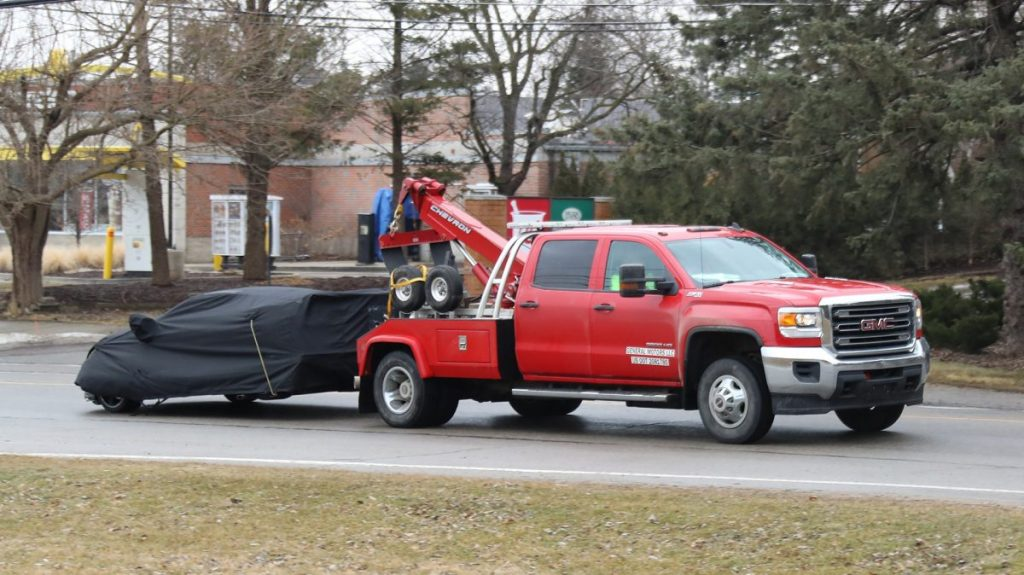
Scratch
Ensure the safety of personnel→Move the vehicle to the side of the road without obstructing the traffic→Call 911 →Take photos or videos of the condition of the vehicle →Register the accident by police and keep a proper record of the accident→Contact the rental car company and insurance company.
Theft
Call 911 → Police take notes → Insurance report → Verify information → Payment
Malfunction
Call the rental car company → They will send someone nearby to tow your car or change a tire.
If the rental car company is unable to help you, contact a towing service with the help of the police. Car repairs are very expensive in the United States, so it is important to have insurance.
Roadside Assistance
When renting a car and driving in the United States, if a traffic accident occurs, in addition to calling 911, you can also contact the following emergency contact numbers:
State-by-state Cellphone Highway Emergency Numbers:
https://www.ou.edu/police/dpsinfo/state-by-state-cellphone-highway-emergency-assistance-numbers
You can also call your car rental company:
- AVIS: 1-800-352-7900
- SIXT: 1 (888) 749 8227
- Budget: 800-218-7992
- Thrify: 1-800-283-0898
- Hertz: 1-800-654-5060
- ACE: (877) 822-3872
- Dollor: 800-235-9393
- Yesaway: 1 424-800-4990
Returning the Rental Car
To return the car, just drive back to the rental car company, but pay attention to the following things:
Refuel Before Returning
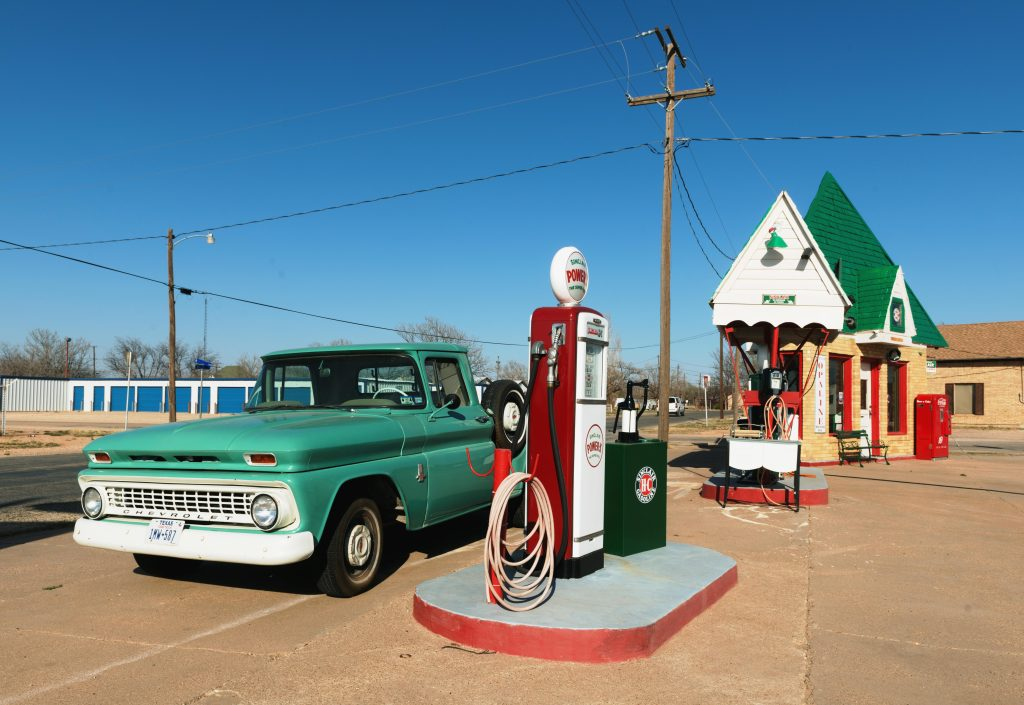
Usually, the basic rule for returning a car is to refuel the gas before returning it to the rental car company.
Even if the time is up, and there may not be a convenient gas station, it’s okay to drive for a while (about 5 kilometers or so) after refueling.
If you try to return the car after the due time without refueling, or if you drive a excessive long distance after refueling, we will calculate the remaining time and charge you an additional fee.
Inspect the Car
When you arrive, we will have a representative inspect your vehicle for damage. If it had any damage, additional payment would be made.
Reconcile the Fee
When you return the car, the staff will check and record the vehicle and print the settlement list on site. Please check the list carefully, and if you have any unknown charges, you can raise them in person or call customer service to solve the problem.
Keep the Contract and Document
After returning the car, it is recommended to keep the contract and receipts in a safe place in case of needs.
Help after Trip
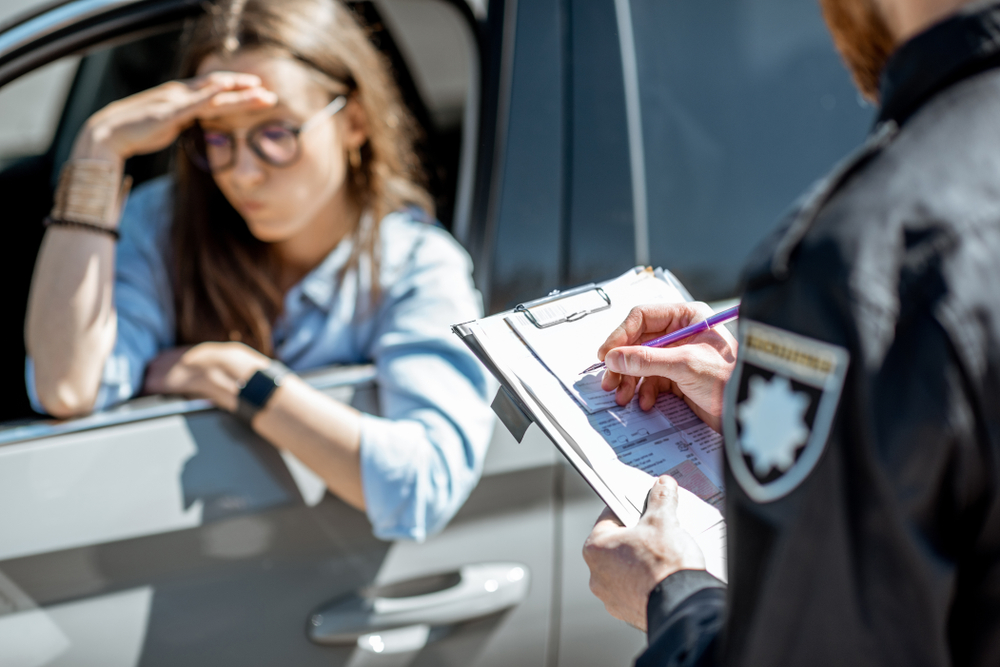
Traffic Citation
The penalties for traffic violations in the United States are very expensive, so it is recommended that you strictly follow the traffic regulations.
How to Pay Fine Ticket:
- Online payment is the most convenient. There is a payment web site attached on the ticket, follow the instructions to enter the ticket serial number and then add your credit card information to pay the fine. Please mind the due date, otherwise you would pay a late fee.
- If you could not pay right away, tell the rental company when you return the car, and the company could charge your credit card directly, although there is usually a commission.
Note: If you got a ticket, you should pay the fine as soon as possible. If you receive a fine that is too high for an unknown reason, you should try to file a complaint locally in the U.S. and do not wait to deal with it until you have returned home.
Insurance Claim
If you bought a full coverage insurance, you would recieve a fast claim settlement. The following documents should be prepared:
- Passport
- Driver’s License
- Credit Card Checkback History
- The Car Rental Contract
- Car Damage Deduction Bill
For more detailed information, check the terms and conditions of insurance company:
https://www.qeeq.com/term?info=axa_policy&browser_open=1
Unknown Charges after Trip
If you received an unexpected deduction when you return to your home country, it might be that your violation fee is paid by the car rental company, but usually the deduction amount will be more expensive than the violation fee because that includes the management fee charged by the car rental company. If you don’t know what the violation was, you can contact our customer service for help.
Classic Routes
American West
1. California: Highway 1 Classic
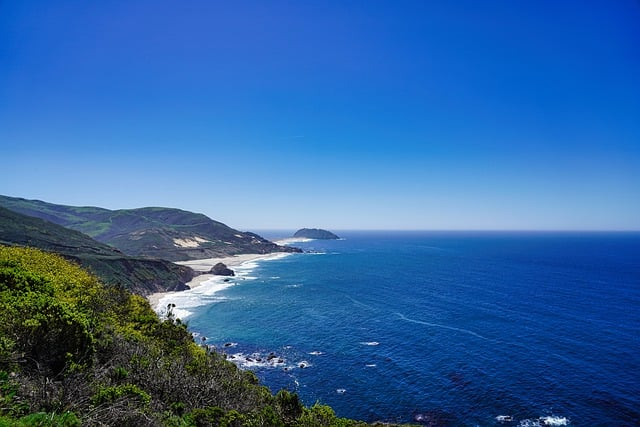
Highway 1 Classic, also known as the Pacific Coast Highway, is one of the most iconic road trips in the United States. This scenic route stretches along the California coastline from San Francisco to Los Angeles. Key stops along the way include the charming town of Monterey, the breathtaking Big Sur coastline, the picturesque town of Santa Barbara, and the vibrant city of Malibu. The route is renowned for its stunning ocean views, dramatic cliffs, and charming coastal towns, making it a must-do for any road trip enthusiast.
2. Red Rock & Dark Skies: Stargazing National Parks
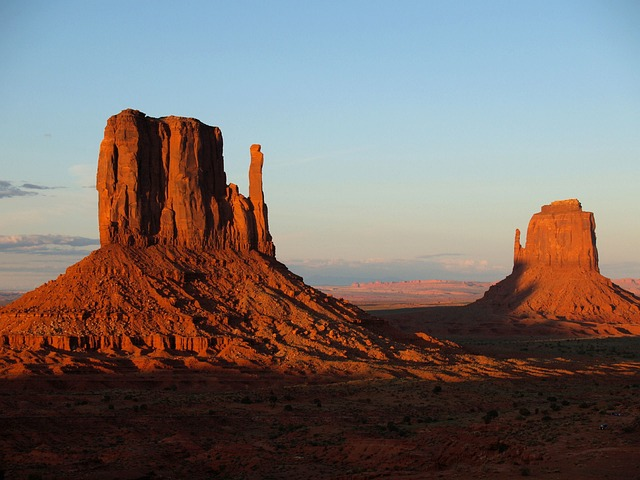
The “Utah: Red Rock & Dark Skies: Stargazing National Parks” route is a spectacular journey through some of Utah’s most iconic national parks, renowned for their stunning red rock formations and pristine dark skies perfect for stargazing. This route typically includes stops at Arches National Park, Canyonlands National Park, Capitol Reef National Park, Bryce Canyon National Park, and Zion National Park. Each park offers unique landscapes, from the towering arches and spires of Arches to the deep canyons of Canyonlands, the rugged beauty of Capitol Reef, the hoodoos of Bryce Canyon, and the majestic cliffs of Zion. The route is ideal for those who love both daytime adventures and nighttime stargazing, as these parks are some of the best places in the United States to experience the night sky free from light pollution.
3.Colorado: A 7-Day Colorado Family Road Trip
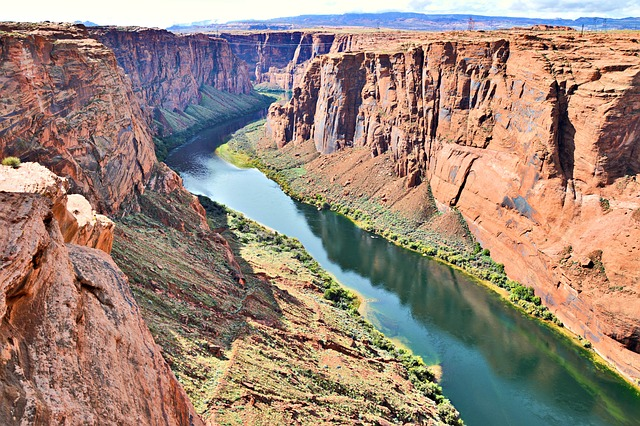
Explore Colorado’s diverse landscapes and attractions in a week. Start in Denver, head to Rocky Mountain National Park for hiking and wildlife, visit Glenwood Springs for hot springs and adventure parks, explore Aspen’s scenic beauty, and end in Colorado Springs with Garden of the Gods and Pikes Peak. Perfect for family fun and outdoor activities.
4.California: Sierra Adventure
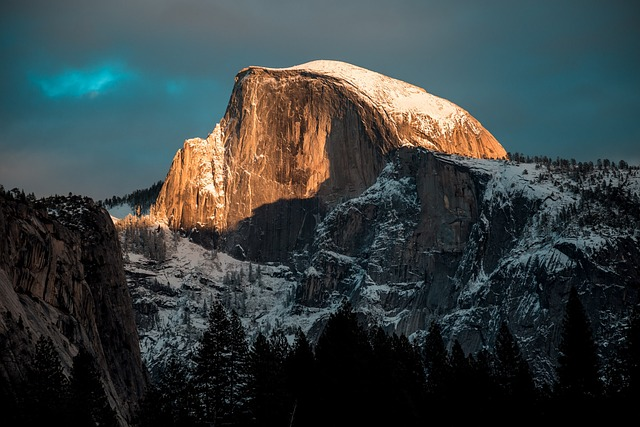
The California Sierra Adventure takes you through the majestic Sierra Nevada mountains. Key highlights include Lake Tahoe, Yosemite National Park, and Kings Canyon. This route is known for its stunning alpine scenery, crystal-clear lakes, and diverse outdoor activities such as hiking, skiing, and rock climbing.
5.Oregon: Oregon’s Newest Scenic Byways
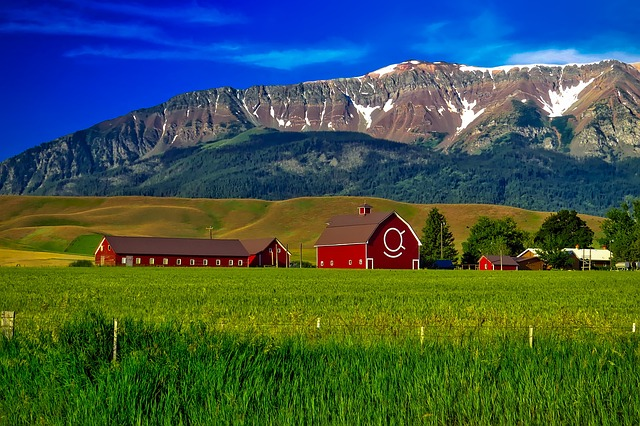
Explore Oregon’s newest scenic byways, which offer breathtaking views and unique experiences. These routes take you through diverse landscapes, from lush forests and rugged coastlines to high desert and volcanic peaks. Highlights include the Cascade Lakes Scenic Byway, the Rogue-Umpqua Scenic Byway, and the Journey Through Time Scenic Byway. Each route provides opportunities for outdoor activities, wildlife viewing, and discovering charming small towns. Whether you’re seeking adventure or relaxation, these byways showcase the best of Oregon’s natural beauty.
Central America
1.Route 66
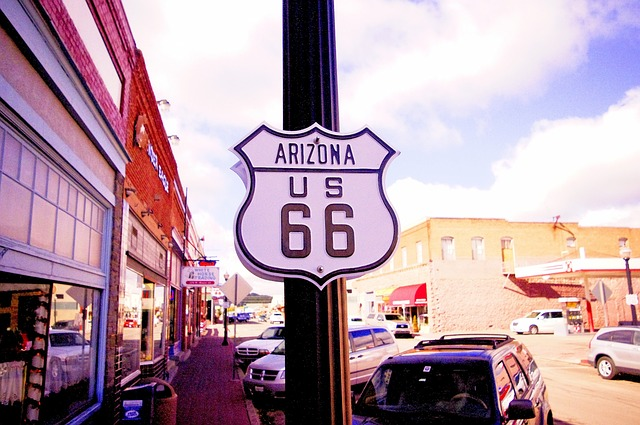
Route 66 is an iconic American road trip route. Starting in Santa Monica and ending at the Mojave National Preserve, this journey spans 215 miles and typically takes 2 to 3 days. Along the way, you’ll encounter 9 notable stops, each offering a unique glimpse into the history and culture of this legendary highway.
2.Montana: Going-to-the-Sun Road
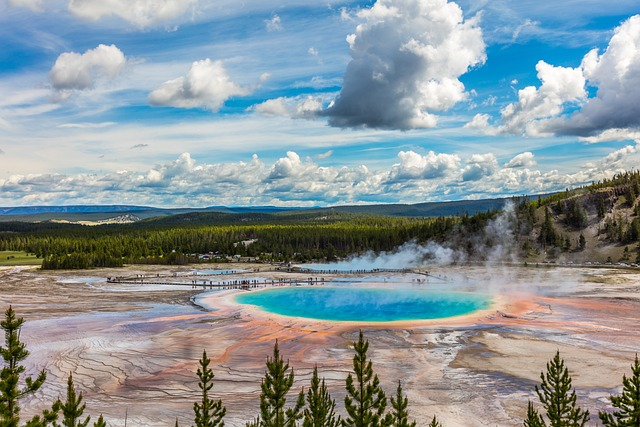
Going-to-the-Sun Road is a spectacular 50-mile drive through Glacier National Park in Montana. This iconic route offers breathtaking views of rugged mountains, pristine lakes, and lush forests. The road crosses the Continental Divide at Logan Pass, providing numerous opportunities for scenic stops and wildlife viewing.
American East
1.Appalachian Mountains: Blue Ridge Parkway Road Trip
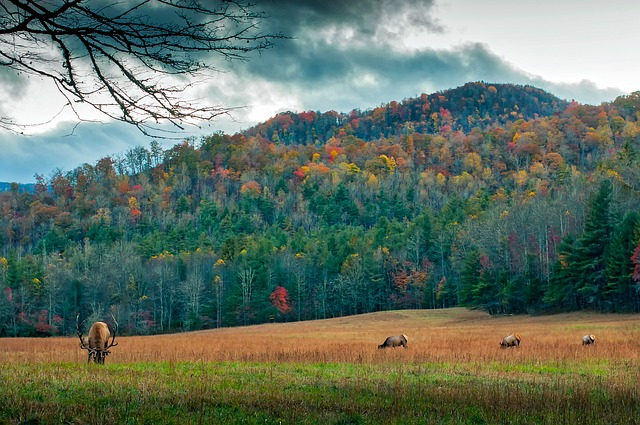
The Blue Ridge Parkway is one of America’s most scenic drives, winding through the Appalachian Mountains and offering breathtaking views, diverse wildlife, and numerous recreational opportunities. This iconic route connects the Great Smoky Mountains National Park in North Carolina to Shenandoah National Park in Virginia.
2.The Kancamagus Highway (NH Route 112)
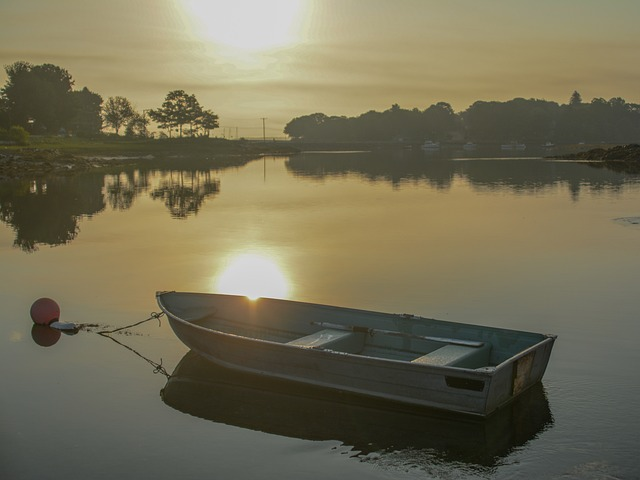
The Kancamagus Highway, also known as “The Kanc,” is a 34.5-mile scenic drive along New Hampshire’s Route 112 in the White Mountains. Renowned for its stunning fall foliage, this route offers breathtaking views of the White Mountain National Forest, picturesque rivers, and cascading waterfalls. Key stops include the Albany Covered Bridge, Sabbaday Falls, and the Russell-Colbath Historic Site. This drive is a must-do for anyone looking to experience the vibrant colors of New England’s autumn.
Alaska
Alaska Highway Road Trip
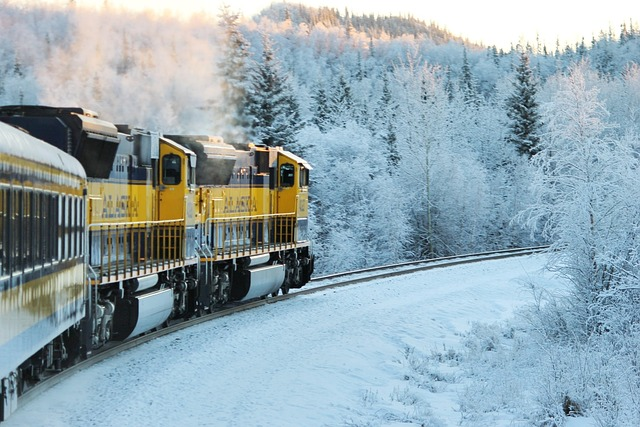
The Alaska Highway offers a scenic and adventurous drive through the heart of Alaska. Starting from Delta Junction and ending in Fairbanks, this route takes you through stunning landscapes, including vast forests, rivers, and mountains. Along the way, you can stop at charming towns like Tok and North Pole, and enjoy the natural beauty and wildlife that Alaska is famous for.
Hawaii
Maui: Northeast Coast and East Maui via Hāna Highway
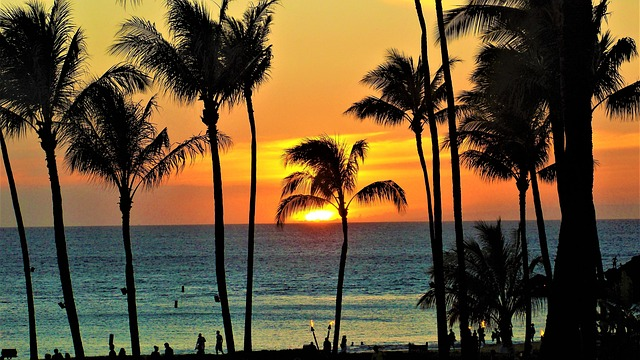
What do you get when you combine 59 or so mostly single-lane, century-old bridges, hundreds of asphalt curves, and 54 miles of roadside waterfalls, verdant rainforests and stunning sea-level and thousand-foot elevation East Maui coastal views? One of Hawaiʻi’s best (and most famous) road trips, period.
Useful Websites and Numbers
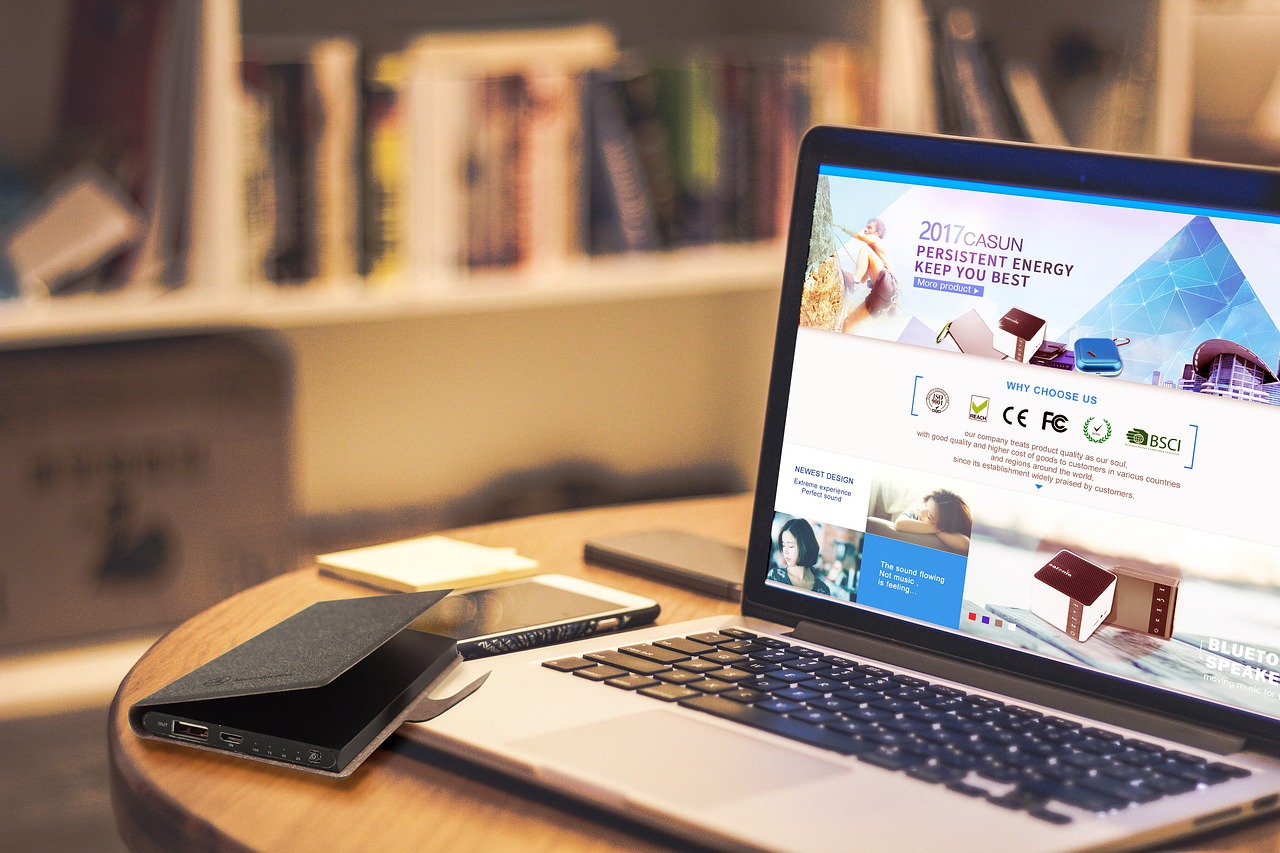
- Official Travel Site of the United States:
- Police, Fire, Ambulance: 911
- State-by-state Cellphone Highway Emergency Numbers:
https://www.ou.edu/police/dpsinfo/state-by-state-cellphone-highway-emergency-assistance-numbers
- Embassy Numbers by Country:
- Car Rental Companies:
AVIS: 1-800-352-7900
SIXT: 1 (888) 749-8227
Budget: 800-218-7992
Thrifty: 1-800-283-0898
Hertz: 1-800-654-5060
ACE: (877) 822-3872
Dollar: 800-235-9393
Yesaway: 1 424-800-4990
